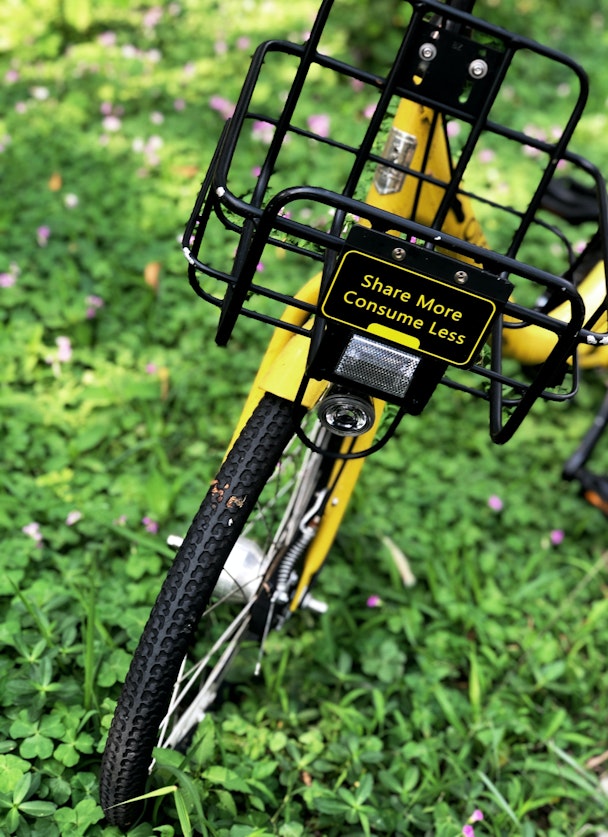Sustainability, but this time it’s personalized
Personalization. Sustainability. It’s impossible to avoid these topics as a marketer in 2022. But how can they work together to drive responsible decision-making and consumer loyalty? Cecily Hart and Jessica Goldesgeyme, senior consultants at Frog, explore how brands can leverage the untapped relationship between these two buzzwords.

Frog on what sustainable marketing actually looks like / Pop Zebra via Unsplash
It’s common practice for brands to publicize sustainability goals, and consumers now expect it. But the extent to which these goals actually impact their behavior is up for debate. Brands have the ability to help consumers make informed sustainable decisions about their consumption – and 75% of consumers actually want brands to help them live sustainably. The UN has even created the ‘Good Life Goals’ as a set of personal actions that help everyone contribute to the UN Sustainable Development Goals.
This is where personalization can come into its own. We’re used to personalized communications and journeys, and 71% of consumers now expect companies to deliver personalized interactions.
But how often do we see personalization around sustainability? This doesn’t mean more messaging about a company’s corporate social responsibility (CSR) activities, but rather brands helping the consumer drive their own difference; breaking down the corporate goals to a level where a consumer feels responsible and empowered to make an impact. 72% said they expect the businesses they buy from to recognize them as individuals – so why isn’t sustainability and impact considered in the same individualized way, to ultimately drive data-driven conscious decision-making?
How are brands bringing sustainability to life through personalized communications?
Oddbox is a UK-based business focused on reducing food waste by saving fruit and vegetables that are “too wonky and too many.” It takes this brand purpose to another level by creating personal impact reports, sharing how much each consumer saves. Examples include: “Every single drop of water needed to produce the fruit and veg you rescued totaled 2,503 liters of water going to waste – if you were to drink that, it’d take you an average of 42 months.” It also shares the total impact of the previous week’s ‘rescue mission’ as a continual reminder of the consumer’s personal impact.
By Rotation is a fashion brand created to “transform the way we consume fashion by challenging overconsumption habits.” Not only is it creating a community, but also making sustainable fashion accessible and extending the life cycle of quality items. It brings this to life through the personalized ‘Impact Scale’ featured on its app that tracks positive savings made by renting rather than buying. It focuses on textile waste, water and CO2, showing the environmental impact of different items, allowing consumers to “make an empowered choice when it comes to consuming fashion.”
How are brands bringing sustainability to life through personalized products?
Function of Beauty is the “original custom hair care” brand. Through an online quiz, it provides consumers with customized hair care solutions based on their unique hair type. The beauty industry produces over 120bn units of packaging a year, and in addition to increasing recyclable packaging, waste can be reduced by guiding consumers to the correct products. Function of Beauty co-founder Zahir Dossa has a PhD in sustainability, which sits at the heart of the brand with its “mission to become more earth-friendly.” By providing the ability to personalize the color, fragrance and packaging of its products, it has effectively tapped into the millennial zeitgeist, cut down beauty waste while increasing brand loyalty, and can use the consumer data captured to make further product recommendations.
The DO Black Card is the first credit card with a carbon footprint limit. Users can track the carbon emissions of their personal purchases, and their spending is limited by climate impact rather than financial credit. Consumers are more accountable for how they spend their money and what sort of businesses they support.
So, what does this mean for brands in the future?
There is no doubt that broader, company-wide sustainability goals are still important, but the next step is bringing these to life on a consumer level. The big numbers are great to showcase scale, but the real impact happens when brands contextualize these in real-world examples. Data-driven personalization is central to this. Use consumer data to help users purchase the right product and reduce consumer waste. Combine your business’ or products’ carbon impact data with your consumer purchase data to show individuals the impact of their purchases. Ultimately, empower consumers and make it easy for them to make sustainable decisions.
Now is the moment to embrace this approach as consumer behavior shifts. Younger generations are increasingly likely to make purchase decisions based on values and principles. They value brand authenticity and are willing to pay more for sustainable products, so why not use your consumer data for good and make sustainability personal?
Content by The Drum Network member:

frog
frog is a leading global creative consultancy, part of Capgemini Invent. Partnering with passionate leaders and visionary entrepreneurs, we apply creativity, strategy,...
Find out more
